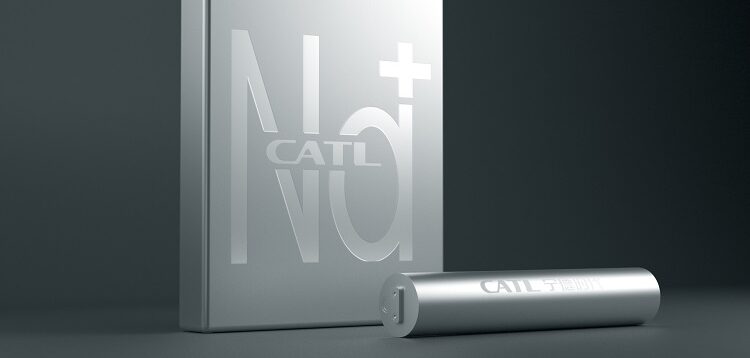Contemporary Amperex Technology (CATL) recently unveiled the company’s first-generation sodium-ion battery, together with its AB battery pack solution – which is said to be able to integrate sodium-ion cells and lithium-ion cells into one pack.
The sodium-ion battery has a similar working principle to the lithium-ion battery. Sodium ions also shuttle between the cathode and anode, however, compared with lithium ions, sodium ions have a larger volume and higher requirements regarding structural stability and the kinetic properties of the materials. To date, this has created a bottleneck hindering the industrialization of sodium-ion batteries.
CATL has been researching sodium-ion battery technology for some time. In terms of cathode materials, it has applied Prussian white material with a higher specific capacity and redesigned the bulk structure of the material by rearranging the electrons, which solved issues of rapid capacity fading upon material cycling. In terms of anode development, the company has developed a hard carbon material that features a unique porous structure, which enables the abundant storage and fast movement of sodium ions, and also good cycle performance.
The company states that its first generation of sodium-ion batteries have the advantage of high-energy density, fast-charging capability, excellent thermal stability, great low-temperature performance and high-integration efficiency, among others. The battery cell can achieve up to 160Wh/kg energy density and can be charged in 15 minutes to 80% SoC at room temperature. Moreover, in a low-temperature environment of -20°C, the sodium-ion battery has a capacity retention rate of more than 90%, and its system integration efficiency can reach more than 80%. CATL states that its target for the next generation of sodium-ion batteries is to exceed 200Wh/kg.
CATL has also highlighted the importance of its AB battery system solution, which enables a mix-and-match approach to sodium-ion batteries and lithium-ion batteries within the same pack, and controlling them using a common BMS. This, it says, can compensate for the current energy-density shortage of the sodium-ion battery, and also expand its advantages of high power and performance in low temperatures.
Qisen Huang, deputy dean of the CATL Research Institute, said that sodium-ion battery manufacturing is perfectly compatible with the lithium-ion battery production equipment and processes, and the production lines can be rapidly switched to achieve a high-production capacity. As of now, CATL has started its industrial deployment of sodium-ion batteries, and plans to form a basic industrial chain by 2023.


